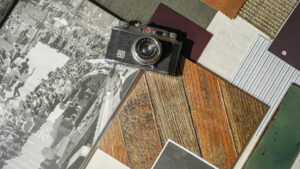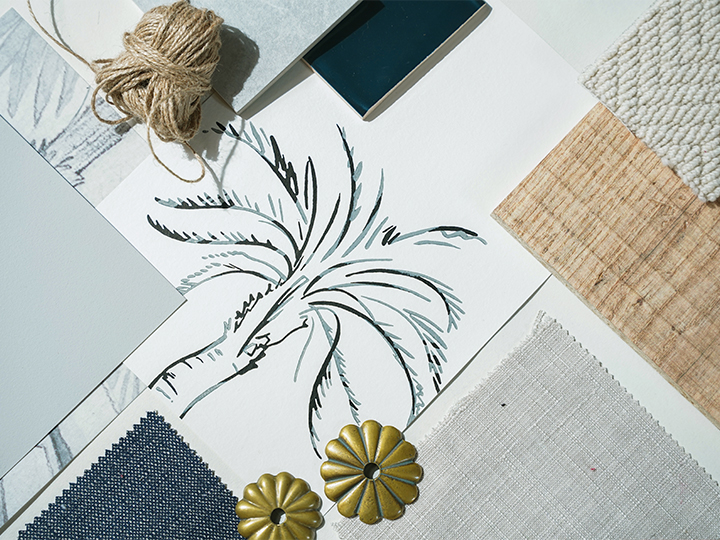When venturing into the realm of interior design, you might have a vision in mind, but the challenge lies in seamlessly blending colours, fabrics, materials, and shapes. How can you ensure that the various inspirations combine harmoniously in the spaces you wish to redecorate? The most effective approach is through the creation of a mood board!
Let us share with you ten tips for creating your own mood board that sparks inspiration.
ESTABLISH A DISTINCT COLOUR PALETTE
Delve into the task of defining a clear colour palette that aligns with your preferences and complements the envisioned ambiance. Will the design lean towards brightness or embrace a darker interior? Are you inclined towards warm, rich tones, or do you lean towards an airy, contemporary aesthetic?

SUSTAINABLE DESIGN ELEMENTS
Keep your home people and planet friendly, explore incorporating eco-friendly materials and design elements into your mood board. This could include recycled materials, energy-efficient appliances, and sustainable furniture options, aligning your design choices with environmental consciousness.
Incorporate Real Samples
For those opting for a physical mood board, consider elevating it with real samples to add depth. Acquire paint and fabric swatches from your chosen interior brands. Explore our offerings online and request your complimentary floor samples. It’s time to infuse your creativity into the process!

Explore Texture Variety
Integrate different textures into your mood board to add tactile depth and visual interest. Consider incorporating samples of materials such as wood, metal, fabric, and stone to evoke a multi-sensory experience in your designed space.
Consider Lighting Elements
Include lighting elements in your mood board to highlight their role in shaping the atmosphere. Explore various lighting fixtures, from pendant lights to floor lamps, and assess how they contribute to the overall ambiance you aim to achieve.
Integrate Personal Art or Photography
Add a personal touch to your mood board by including your own artwork or photographs. This not only makes the design more unique but also helps in creating a space that resonates with your personality.

Scrutinise Furniture Selection
Give meticulous attention to the form and finish of the chosen furniture. Does it align with the desired atmosphere and style you envision for the space?
Experiment with Layout Options
Play around with different layout options for your mood board. Consider arranging elements in a grid, a collage, or a more structured format. Experimenting with the layout can bring new perspectives and help refine the overall aesthetic.
Embrace Online Inspirations

For a digital approach to mood boards, seek inspiration predominantly online through platforms like Pinterest and in various magazines. Unleash your creative instincts using software like Photoshop and Canva.
Utilise Your Mood Board as a Shopping Guide
Once your mood board is complete, leverage it as a reliable guide during your shopping endeavours. This prevents impulsive purchases and opens the possibility of discovering additional decor and soft furnishings that harmonise with your vision.
Enjoy the delightful journey of decorating!












